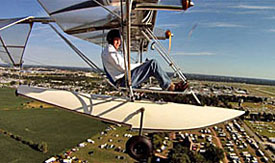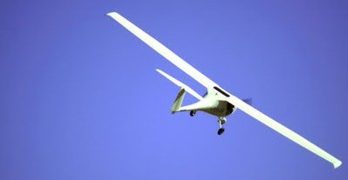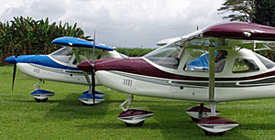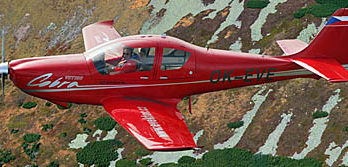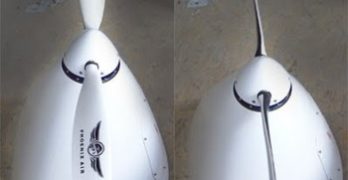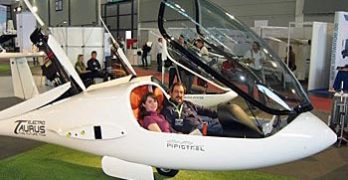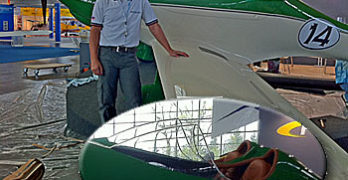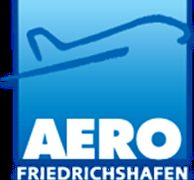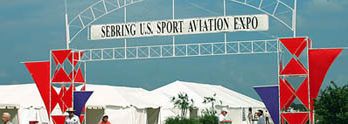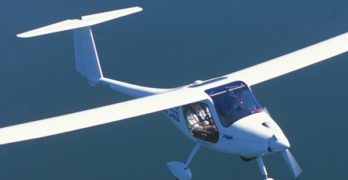Oshkosh 2011 is history. By numerous accounts, this was a vast improvement over 2010 when the comments commonly went, “Well, I had some interest (in my airplane) and I hope to sell one or two… maybe.” This year I had easily 30 conversations revealing either outright positive successful results or varyingly robust mood indicators such as, “Looks like aviation has life in it again.” I heard from sellers and customers and rarely had to solicit their opinions. *** A number of aircraft purveyors said they took cash deposits and wrote firm contracts. I estimate about 30 aircraft sales by this method. Companies like Icon, Flight Design, and Terrafugia sold a large number of future delivery positions (more than 50, more than 60, and “several,” respectively). *** Icon neared or crossed the 500-on-order point, partly by “testing elasticity” in the pre-order market by lowering the A5 seaplane deposit to $2,000 from $5,000.
Search Results for : Pipistrel
Not finding exactly what you expected? Try our advanced search option.
Select a manufacturer to go straight to all our content about that manufacturer.
Select an aircraft model to go straight to all our content about that model.
Oshkosh Airventure 2011
After my own Labors of Hercules, I arrived at the EAA Oshkosh Airventure seasonal highpoint event Tuesday mid day. Since it was a beautiful day by anybody’s standards, I decided not to brave the hordes at the show and headed out, once I got settled in my digs for the week, to a lovely little airport named Brennand about 10 minutes northwest of EAA’s Wittman Field show grounds. *** I was in luck with more than just weather: the San Antonio Light Sport Aircraft (SALSA) gang from Texas was there demo-flying its all-composite Pipistrel Virus SW 80/100, tricycle-gear (there’s also a taildragger version), composite touring motorglider. *** The Pipistrel line includes several designs I have admired from afar but not had the opportunity to share air with. *** All that changed when Salsa’s prime mover and shaker Rand Vollmer introduced me to a big, friendly Texican fella named Dave White.
Fixed wing or Flexwing; Take Your Pick
I am only aware of one company* in the USA that offers you a choice of a conventional three-axis fixed wing or a weight-shift control (WSC) flexwing. Why do this? Simple. Not all pilots want the same kind of aircraft and some of us like both kinds of flying.
It happens that the boys from Zephyr Hills airport have two interesting machines and you ought to know about them. “Boys” in this case refers to Abid Farooqui, Larry Mednick, and Phil Mednick; the latter are a son and father combo. Abid and Larry are trike guys while Phil is the fixed wing fellow and they display not only expertise, but as the impressive Revo development shows, they bring genuine creativity to the aircraft. This trio of talent operates several businesses, including a flight school.
One company, Apollo Aircraft, offers the Columbian-designed Ibis Magic as well as the Apollo LSA (formerly Apollo Fox).
Aero 2011: LSA Companies Grow… Expanding Into GA
Update 9/24/14 — Added to the models below, South Africa’s The Airplane Factory is also offering their four seat Sling 4. This model is flying but a decision about certifying it has not been made at this time. It is presently available as a kit-built airplane.
Some of the more successful Light-Sport Aircraft producers have their eye on the market for larger aircraft, those able to seat four… or more. While continuing to manufacture their LSA models, three companies showed bigger aircraft or mockups at Aero 2011 and one other company has already done extensive test flying. Look out Cessna, Piper, Diamond, and Cirrus! Those familiar GA brands are about to get new competition. *** The first of this emerging segment was the Evektor Cobra, dating back more than four years. Previously marketed at shows like Oshkosh, Cobra was promoted with alternate powerplants of 200 and 315 horsepower. Joining Cobra in the roughly 2,500-pound gross weight category (approximately the weight of a Cessna 172) are three newcomers: Tecnam’s P2010, Flight Design’s C4, and Pipistrel’s Panthera (photos).
“Spy Network” Report: Twin Electric Sailplane
I heard again today from Jim Lee who’s still overseas helping prep the PhoEnix electric motorglider for July’s big, $1.65 million CAFE Green Flight Challenge (GFC) fuel-efficient flight competition in Santa Rosa, CA. *** Jim sent along photos of the electric nosecone with integrated feathering prop/spinner assembly. First test flights of the PhoEnix are planned in a couple weeks. *** BTW, the enhanced streamlining afforded by the much smaller e-motor boots the lovely creature’s performance from L/D 32:1 to 36:1 — a 12.5% increase! That’s great for soaring and also means less power required to sustain flight, the Big Picture for endurance at this stage of electric aviation. *** The GFC PhoEnix entry will be powered by a 44 kW motor and controller developed in house by Phoenix Air. *** Lipo (lithium polymer) batteries, popularized by the RC model industry for their light weight and high storage capacity, will hold the electric “gas”.
LEAP Awards Electric Aviation Prizes
Eric Lindbergh, grandson of Charles A. Lindbergh, awarded the LEAP Prize to Pipistrel’s Ivo Boscarol at the just-finished Aero General Aviation convention in Friedrichshafen, Germany. *** The 3rd annual e-Flight gathering took place there also, and Lindbergh’s Best Electric Aircraft award went to Pipistrel’s Taurus Electro. *** There were some notable challengers in the category and three finalists: the Taurus, the Electric Cri-Cri (power by Electravia), and Eric Raymond’s Sunseeker II solar airplane. *** Also awarded was the Best Electric Propulsion. The two finalists were the LZ Design FES (Front Engine Sustainer) system and the Rapid 200 Fuel Cell propulsion system from Polytechnic Torino. *** The LZ FES was the winner. *** The LEAP 2011 Outstanding Achievement Award went to Bertrand Piccard, Andre Borschberg and the Solar Impulse Team for its electric around-the-world project airplane. *** A romantic, and apt, spin on the awards is linking today’s electric pioneers to Lucky Lindy’s amazing transatlantic flight in 1927, which pretty much singlehandedly changed the global perception of aviation from a daredevil hobby or foolhardy mail delivery system to the common transportation, recreational and warfare tool it has become.
Aero 2011 Pre-Show Attention Getters
The major European Airshow, Aero, opened this morning with the usual unveiling of new designs but one aircraft appeared to be the center of attention. Peter Funk had an idea five years back but shelved it for other projects. Now the time is right for his distinctly retro treatment of one of Light-Sport aviation’s sharpest designs, the Fk14 Polaris (Alert readers will identify Polaris as the Cirrus SRS, that GA company’s onetime entry in the LSA sweepstakes.) *** Even experts accustomed to following the latest in new or updated designs were caught off guard by the unorthodox entry (photo). With dual windscreens and race car bodywork, the open cockpit creation charmed many who gained early access to the great exhibit halls of Aero… 11 of them, each the size of a gymnasium. While exhibitors were assembling their displays Fk Lightplanes’ staff grabbed lots of attention with their Fk14 Lemans. *** Constrained by their ongoing contract with Cirrus until the end of the year, Fk Lightplanes sought permission before revealing Lemans and sales will not happen in 2011.
Aero and e-Flight Expo… coming soon
Right after Sun ‘n Fun, the e-flight Expo kicks off for the third time at “Aero” in Friedrichshafen, Germany, April 13-April 16. *** Bunches of new aircraft and propulsion technologies along with the awarding of the Lindbergh Electric Aircraft Prize (LEAP) will mark the gathering of 550 exhibitors from 26 countries. *** The e-flight name stands for more than electrical flight innovations: ecological and evolutionary advances in flight regardless of their nature are embraced, although electric is certainly leading the show. *** Erik Lindbergh, grandson of Charles Lindbergh, will present his foundation’s prize for outstanding achievements in the development of electric flight. *** This year should bring several exciting advances in electric flight . I’ll be doing a broad story for Plane & Pilot magazine soon on what’s up and what’s coming. *** Another highlight of the Expo is “History for the Future of Flight”, a tantalizing assemblage of descendants and close relatives of last century’s aviation pioneers: Claude Dornier, Igor Sikorsky, Marcel Dassault and Count Zeppelin.
Seventh Sebring Sustains Show’s Success Story
If you’ll pardon a little fun in my title, I’m pleased to offer a report from Chairman Bob Woods on the seventh running of the Sebring U.S. Sport Aviation Expo, abbreviated by many to simply Sebring LSA Expo. *** The total number of exhibitors was 147, a small decline from last year. Aircraft on display numbered approximately 135, about the same as 2010 and including some new or returning exhibitors such as Kitfox, Pipistrel, and Diamond. The Popular Rotorcraft Association had a presence this year with a promise to increase their footprint in 2012. *** Attendance was about 11,000, the same as last year (and I observe this count is larger than many other so-called “major” airshows —DJ). “Attendees were down slightly from 2009 due to extensive wintry weather up north, but Thursday was the best opening day we’ve ever had,” noted Bob. Saturday’s crowd was good, partly as Sebring offered reduced prices for Veterans.
Sleek, Comfortable and Fun; The Sinus Motorglider
Many Americans will agree
the name of this aircraft is odd, and that may be a kind word for the common reaction to “Sinus.” Is the name that important? Sinus (pronounced Seen-us), the aircraft, is a sleek, slender machine capable of impressive performance.
Any soaring-attuned pilot can easily live with the name Sinus for the 49-foot span and, get this, 28-to-1 glide performance! On first glance, except for its elegant, shapely, and thin wings, the Sinus looks like a proper light sport airplane. Pilot Matevz Lenarcic flew one around the world solo, in 80 days, and with zero ground or air support (see “Microlight Motorglider Flies Around the World,” April ’05 UltralightFlying! magazine).
What’s In a Name After All?
Let’s consider that name. U.S. dealer Robert Mudd says Pipistrel – the manufacturer – prefers to pronounce it “seen-us,” not “sighn-us.” They say this refers to a perfect sound wave or sine wave rather than a head cold.


